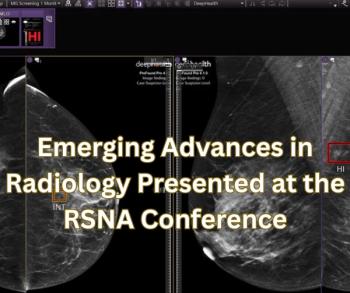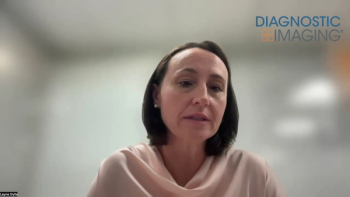
Low-dose MSCT spots renal calculi safely, accurately in overweight patients
Overweight patients presenting with acute renal colic may benefit from low-dose multislice CT scanning, thanks to a novel tube current modulation technique, according to a study in the February issue of the American Journal of Roentgenology.
Overweight patients presenting with acute renal colic may benefit from low-dose multislice CT scanning, thanks to a novel tube current modulation technique, according to a study in the February issue of the American Journal of Roentgenology.
Promising data on low-dose multislice CT for kidney stone detection continue to accumulate. In most studies, however, the trade-off between image noise versus radiation exposure has not been kind to overweight and obese patients. They are often excluded from low-dose studies, scanned at higher doses, or scanned repeatedly with normal doses.
Using 4D tube current modulation - tube current adapted to the x-, y-, and z-planes continuously during scanning - imagers can obtain dose reductions in all patients similar to those obtained with angular (x and y) or z-axis modulation, according to the study led by Dr. Tom H. Mulkens, a radiologist at Heilig Hart Hospital in Lier, Belgium.
Mulkens and colleagues assessed 300 normal to obese patients who underwent standard and low-dose protocols during six- and 16-slice CT scanning, respectively. Two experienced radiologists prospectively reviewed these exams blinded to the scan parameters. In the next stage, one experienced radiologist and two first-year residents retrospectively viewed images from 100 of these patients selected randomly.
The investigators found that low-dose MSCT with 4D tube current modulation provided radiation dose reduction up to 64% without significantly affecting accuracy for detection of urolithiasis, even in overweight and obese patients.
Tube current modulation reduced effective tube current 25% to 31% in all examinations. Low-dose protocols at six- and 16-slice CT scanning provided for mean effective radiation doses of 1.41 and 1.58 mSv, respectively. These protocols, in combination with the 4D tube current modulation technique, provided for additional dose reduction of 51.2% and 64.3% for six- and 16-slice CT scanning, respectively, in comparison with standard dose examinations. These findings were statistically significant.
The investigators found a significant correlation between the mean tube current and each patient's body mass index. They found the overall sensitivity, specificity, and accuracy of low-dose examinations were about 97%; 93%; and 95%, respectively, comparable with those of standard dose scans. The sensitivity, specificity, and accuracy of low-dose examinations of overweight and obese patients reached similarly high values.
The researchers recorded a high interobserver agreement for urinary stone detection and about 15% of alternative diagnosis - clinical findings other than kidney stones, such as appendicitis or ovarian or prostate lesions - in both standard and low-dose exams.
Data suggest that low-dose MSCT with 4D tube current modulation could be used as a standard procedure for evaluation of patients with suspected acute renal colic, the researchers said.
For more information from the Diagnostic Imaging archives:
Newsletter
Stay at the forefront of radiology with the Diagnostic Imaging newsletter, delivering the latest news, clinical insights, and imaging advancements for today’s radiologists.




























